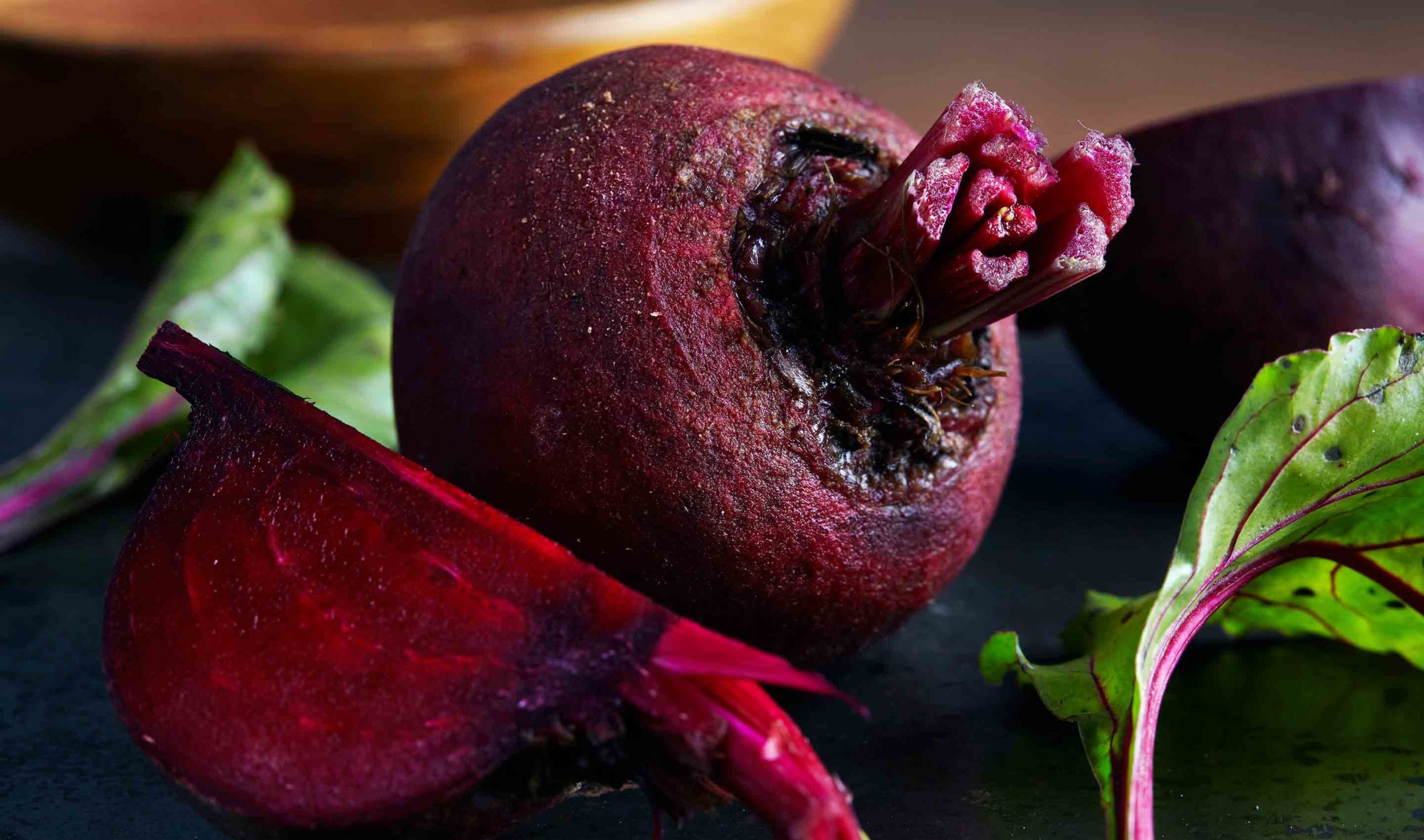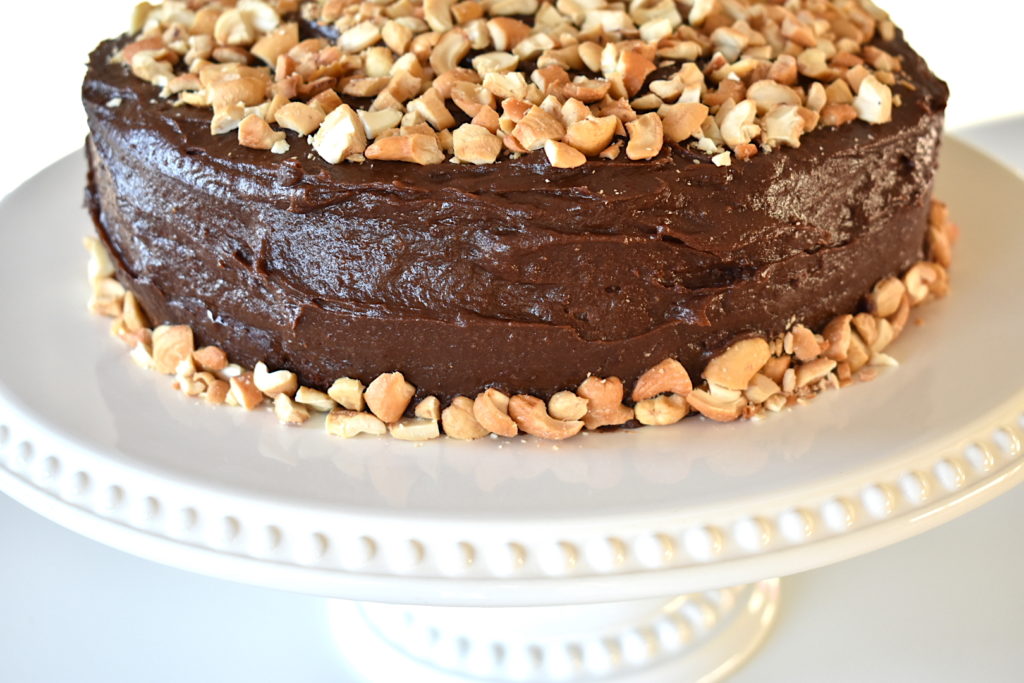
Join PN Level 2 for about $6/day! Plus, FREE Bonus worth $697! (This week only.)

Red beets are a type of root vegetable. They are round, with a deep red color, and grow attached to a leafy green stem. Beets are rich in vitamins C, A, and folate. They are also a good source of minerals including calcium and magnesium. Beets can be stored for long periods if kept in a cool, dark, dry place. Fresh beets often come with their greens attached; if you find them this way, be sure to cook and eat the greens, as they are tasty and highly nutritious. Beets have a tough outer skin which needs to be removed before eating, but the skins will peel off most easily after the beets have been cooked. Roasting or boiling are two good options for cooking beets.
Beets are a type of root vegetable. Red beets are one of many beet varieties. Other varieties include pink, golden, white, striped, and baby. Beets are typically available year round but are at their best in late summer/early fall.
Red beets have a very deep red color. The body of the beet is round, usually between 1.5 to 3 inches in diameter. Beets have a green leafy stem and a root, which looks somewhat like a tail.
One cup of sliced, boiled beets have about 75 calories, 2.9g of protein, 16.9g of carbohydrates, 3.4g of fibre, 0.3g of fat, and 13.5g of sugar.
Beets are rich in vitamins C, A, and folate. They are also a good source of minerals including calcium, magnesium, phosphorus, and potassium.
You’ll find beets in the produce section of the supermarket. Look for beets that are very hard, round, smooth, and have a deep color and an unblemished surface. Select beets that are no larger than 3 inches in diameter; with most varieties, beets larger than 3 inches may become tough and fibrous. The ideal size for beets is around 1.5 inches.
Fresh beets are usually sold in bunches and should have the greens attached. Fresh beets should also have 1 to 2 inches of root end, which looks like a thin tail.
Do not buy beets with wilted, browning leaves—the leafy greens indicate the freshness of the beets. If the greens have been trimmed, look for bunches with at least 2 inches of stem still attached.
First, cut the greens from the beets as soon as you get home from the supermarket, leaving 1 to 2 inches of stem attached. Store them in the fridge for up to 10 days. If the beets turn soft, they are no longer good to eat.
Note: Beet greens can be eaten as well! They should be washed and cooked on the day you buy them, as they do not keep well. If you choose to store them overnight, keep them in an airtight container in the refrigerator.
Begin by cutting off the greens and tail. Reserve the greens, as they may also be eaten. Beet greens are easily prepared by steaming until barely wilted.
Once the beets are clean you can prepare them using your method of choice. Here are two options :
Option 1. Roasting: Wrap the beets in tin foil individually (as you would a white potato). Cook them in a pre-heated 400F oven until tender —about 45 minutes. You’ll know they are ready when you can easily poke holes in them with a fork. Once cooked, briefly run the tin foil under water (to cool it slightly) and then unwrap the beets. The skins will slip right off. Once you are done removing the skins, cut them in slices or quarters for use in a recipe, or eat them as is.
Option 2. Boiling: Clean and prepare the beets, leaving about 1 inch of the stem and the root end intact to keep the beets from “bleeding” into the cooking water. Rinse the beets well and place them in a pot of salted boiling water. Lower the heat to simmer, then cover and cook for approximately 45 – 60 minutes, or until the beets are tender when poked with a fork. Once they are fork-tender, let them cool just enough to handle, then slip off their skins using your fingers or a vegetable peeler.
Note: When working with red beets, be prepared for red stains on your hands and countertops. Because the color is difficult to remove from wood or plastic surfaces, you may want to work on waxed paper and wear gloves. Also, because red beets contain pigments called betalains, eating them can sometimes lead to red or pink coloured urine. This is called Beeturia and is completely harmless.

This cake is sure to leave you wanting more. Its rich flavor and creamy texture make it truly delightful. This recipe is perfect for a special occasion or treat.
Prep Time: 30 minutes Cook Time: 90 minutes Yield: 8-10 slices
Cake:
Begin by boiling the beets. To do so, put the beets in a large pot and add water until the beets are completely submerged. Place the pot on the stove (set to high). Cook on high until the water comes to a boil. Once the water is boiling, reduce heat to a simmer and cook covered for approximately 45 – 55 minutes, or until the beets are tender when poked with a fork. Once they are fork-tender, let them cool just enough to handle, then slip off their skins using your fingers or a vegetable peeler.
Next, slice the cooked beets and put them into your high-powered food processor along with the remaining cake ingredients. Blend until very smooth.
Using coconut oil or cooking spray, grease two round 8” cake pans. Divide the batter evenly between both cake pans. Smooth out the batter with the back of a spoon so that the batter is even within each cake pan. Bake at 350 degrees Fahrenheit for 40-45 minutes or until toothpick comes out clean.
Remove cakes from the oven and let them cool for 20-30 minutes before assembly.
Icing:
Put all ingredients into your food processor and process until smooth (be patient, this might take a little time depending on the power of your food processor – the pulse button is your friend). You may also have to scrape the sides of the food processor a few times. Once smooth and creamy, you can ice the cake!
Assembly:
Remove cooled cakes from cake pans. Place the first on a large serving plate and spread icing evenly on top. Place the second cake on top of the first and spread icing evenly over the entire cake until completely covered.
Chill in the fridge for 4-6h before serving. Note that this cake is very rich – a thin slice will satisfy.
Enjoy!
Precision Nutrition’s Encyclopedia of Food expands every single month as we highlight new foods and showcase beautiful food photography. If you’d like to stay up to date, simply click this link. From there, we’ll send you a FREE copy of our recipe book. We’ll also let you know when new and delicious foods are added to the site.
Red beets are a type of root vegetable. They are round, with a deep red color, and grow attached to a leafy green stem. Beets are rich in vitamins C, A, and folate. They are also a good source of minerals including calcium and magnesium. Beets can be stored for long periods if kept in a cool, dark, dry place. Fresh beets often come with their greens attached; if you find them this way, be sure to cook and eat the greens, as they are tasty and highly nutritious. Beets have a tough outer skin which needs to be removed before eating, but the skins will peel off most easily after the beets have been cooked. Roasting or boiling are two good options for cooking beets.